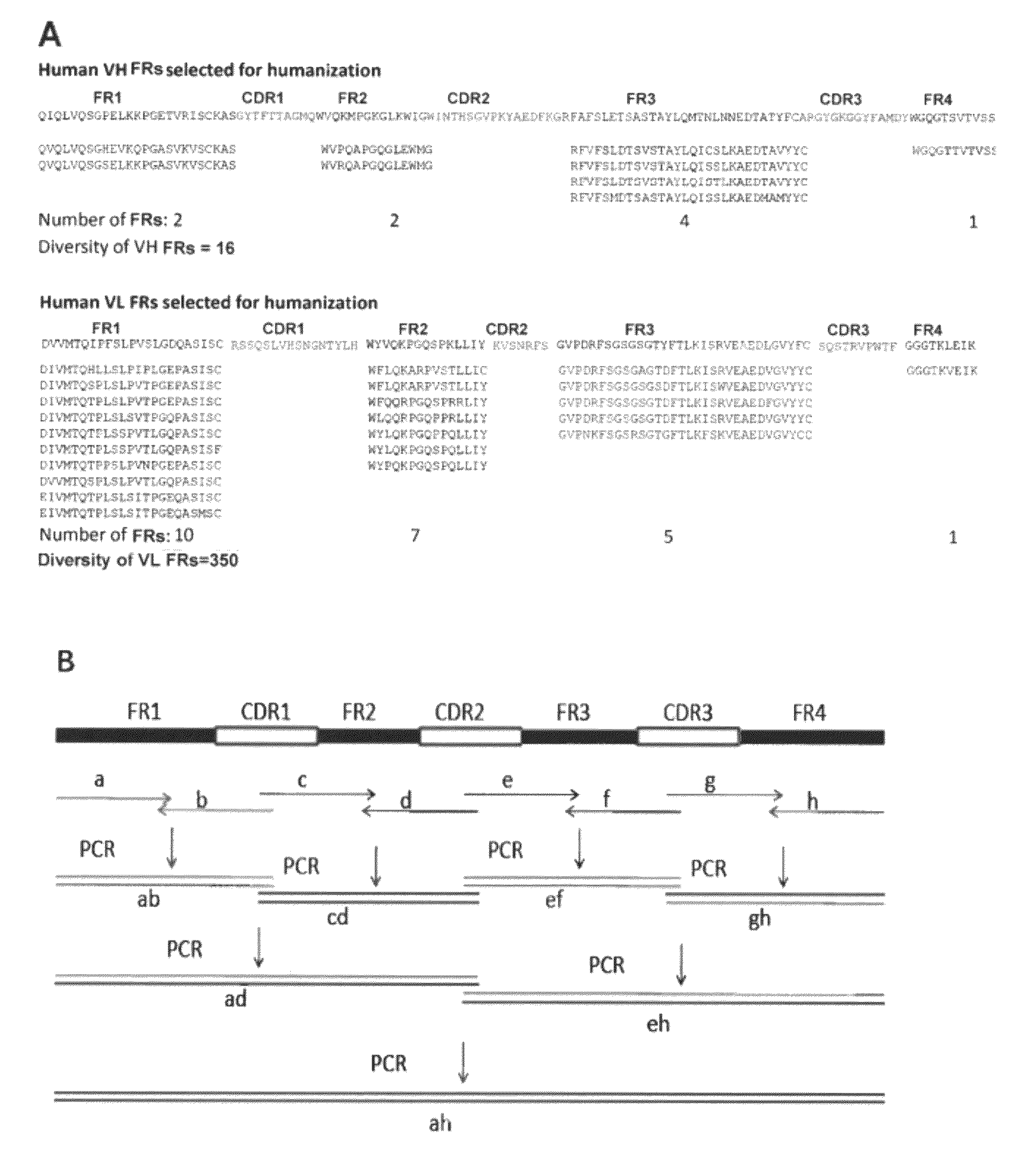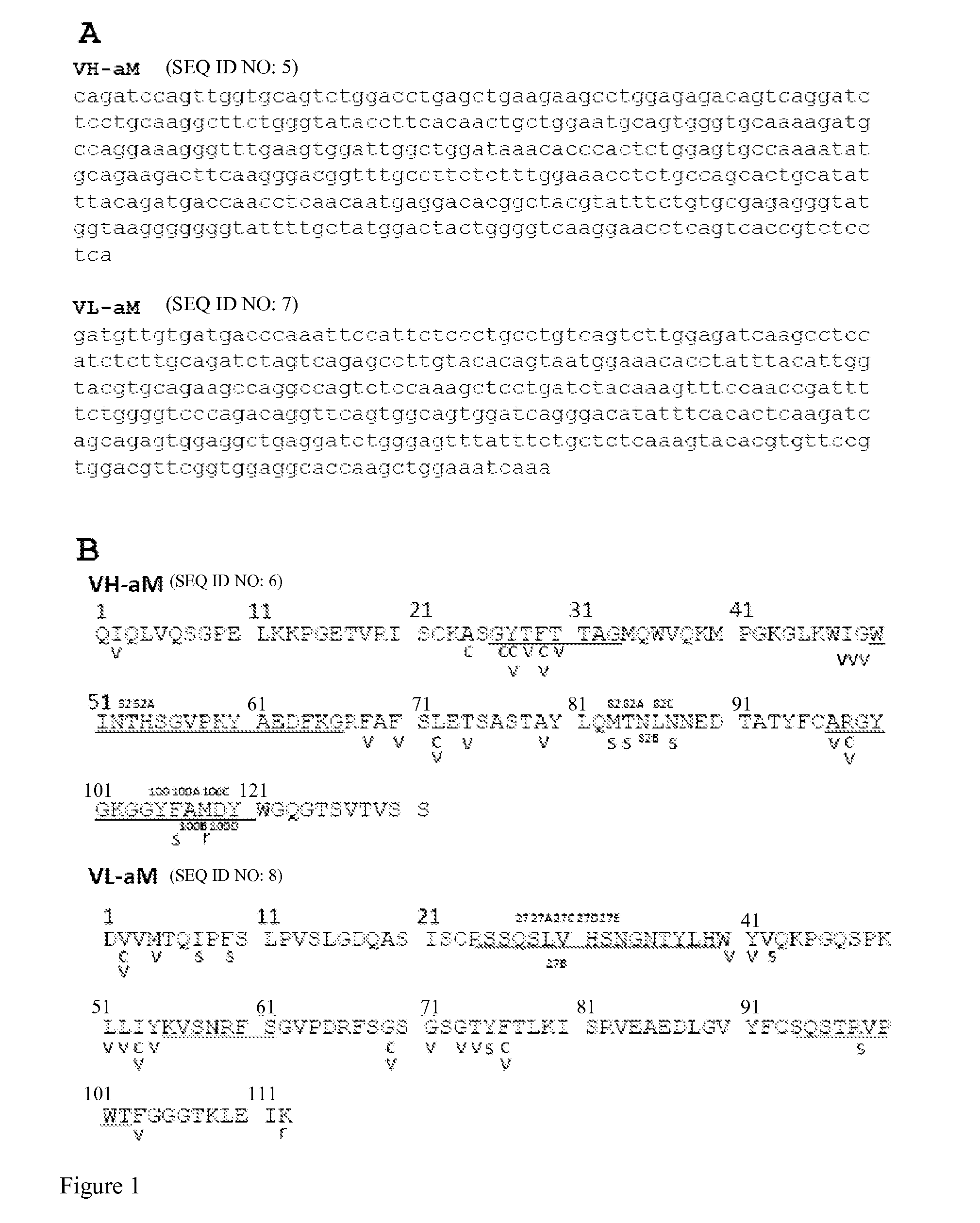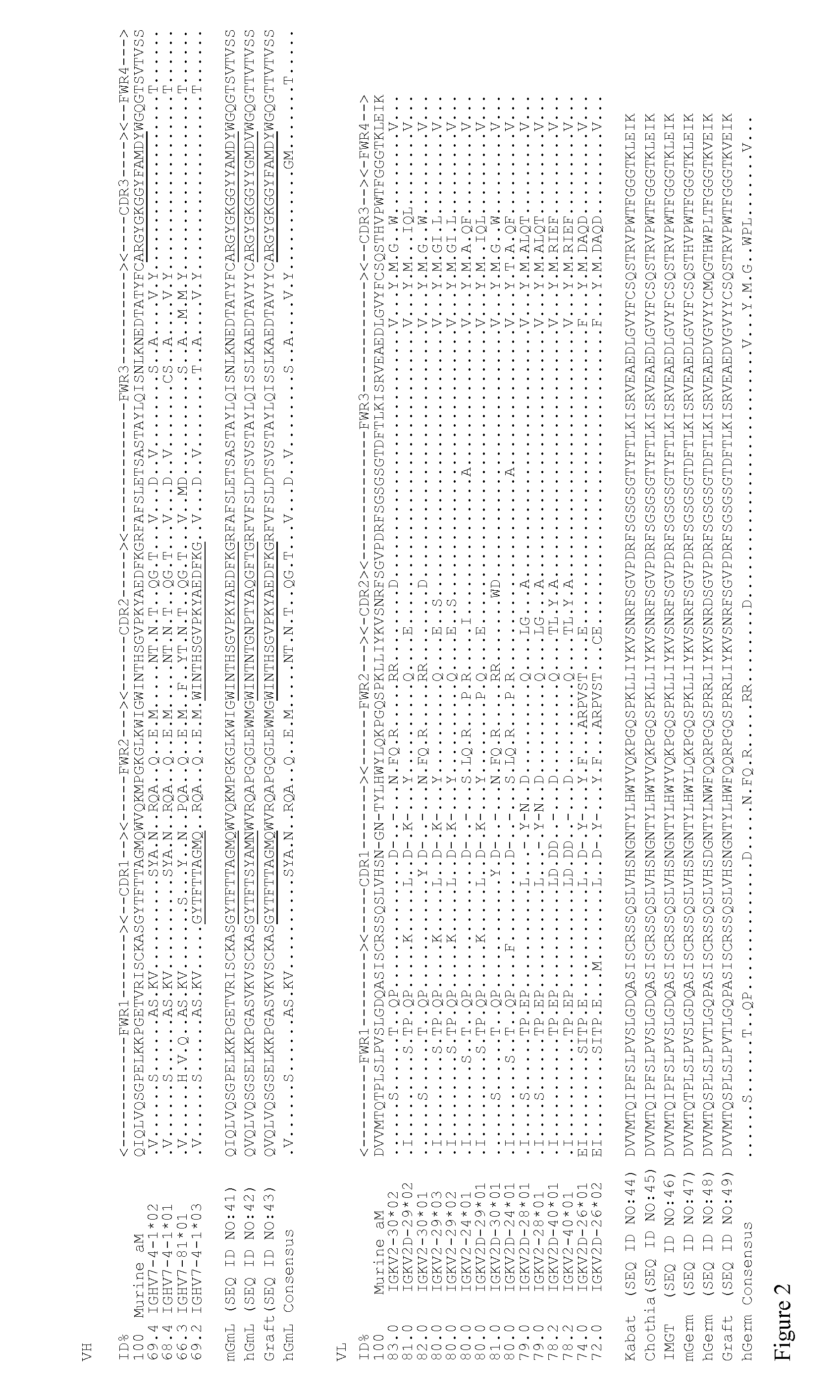Antibody humanization by framework assembly
a technology of humanization and antibodies, applied in the field of humanization of antibodies, can solve the problems of limited clinical use of antibodies in the treatment of diseases, severely compromised the safety, efficacy, and biological half-life of these reagents, and the inefficiency of murine antibody constant regions in directing suitable human subjects
- Summary
- Abstract
- Description
- Claims
- Application Information
AI Technical Summary
Problems solved by technology
Method used
Image
Examples
examples
[0075]Methods
[0076]Cloning and Sequencing of the Parental Monoclonal Antibody
[0077]A murine hybridoma cell line secreting a monoclonal antibody raised against c-Myc peptide was generated in GenScript Inc (Cat. No. RP11731). This mouse mAb is referred to herein as aM.
[0078]Total RNA was extracted from aM hybridoma cells using TRIzol (Invitrogen, Carlsbad, Calif.). cDNA was generated by reverse transcription using Omniscript RT Kit (QIAGEN, Shanghai, China). The VH and VL genes of aM were amplified by PCR using the following primer sets: for amplification of VL gene, the forward primer is 5′-TTATTACTCGCGGCCCAGCCGGCC-3′ (SEQ ID NO:1) and the reverse primer is 5′-GGTGCAGCCA CCGTACGTTTGATTTC-3′ (SEQ ID NO:2); for amplification of VH gene, the forward primer is 5′-CATGGCCGAGGTGCAGCTGGCTAGC-3′ (SEQ ID NO:3) and the reverse primer is 5′-TGCGGCCCCA TTTGCGGCCGCAGAG-3 (SEQ ID NO:4). The PCR products of VH and VL genes were then cloned into pUC57-T vector and sequenced. The sequence results are...
PUM
| Property | Measurement | Unit |
|---|---|---|
| flow rate | aaaaa | aaaaa |
| flow rate | aaaaa | aaaaa |
| pH | aaaaa | aaaaa |
Abstract
Description
Claims
Application Information
 Login to View More
Login to View More - R&D
- Intellectual Property
- Life Sciences
- Materials
- Tech Scout
- Unparalleled Data Quality
- Higher Quality Content
- 60% Fewer Hallucinations
Browse by: Latest US Patents, China's latest patents, Technical Efficacy Thesaurus, Application Domain, Technology Topic, Popular Technical Reports.
© 2025 PatSnap. All rights reserved.Legal|Privacy policy|Modern Slavery Act Transparency Statement|Sitemap|About US| Contact US: help@patsnap.com



